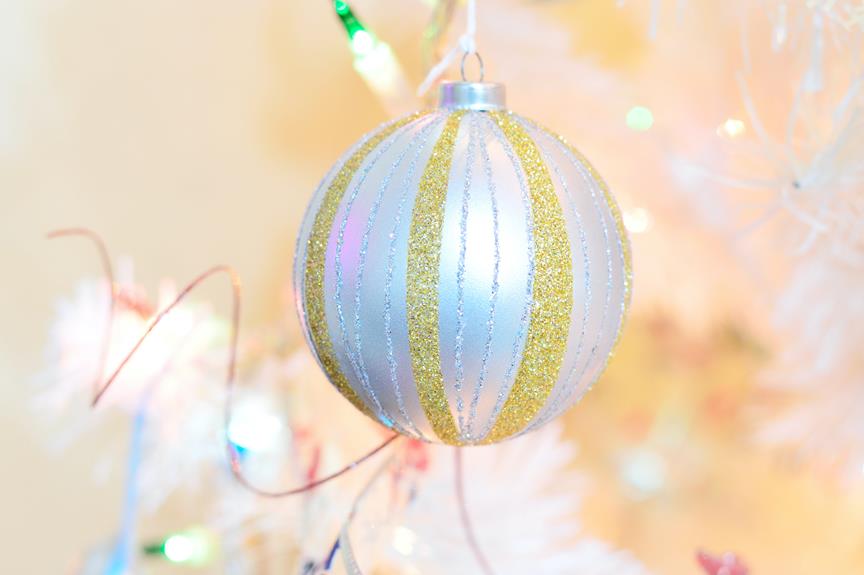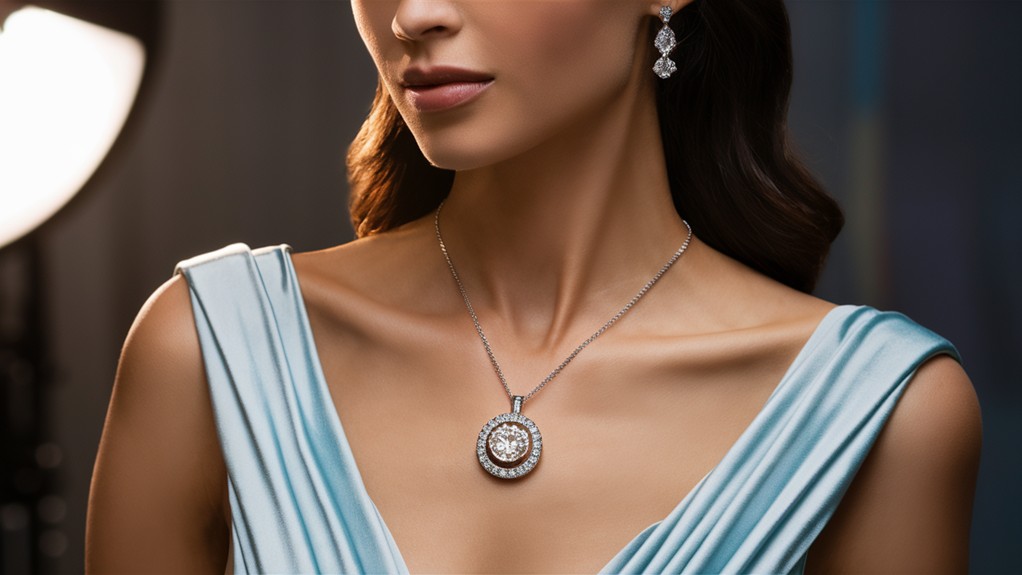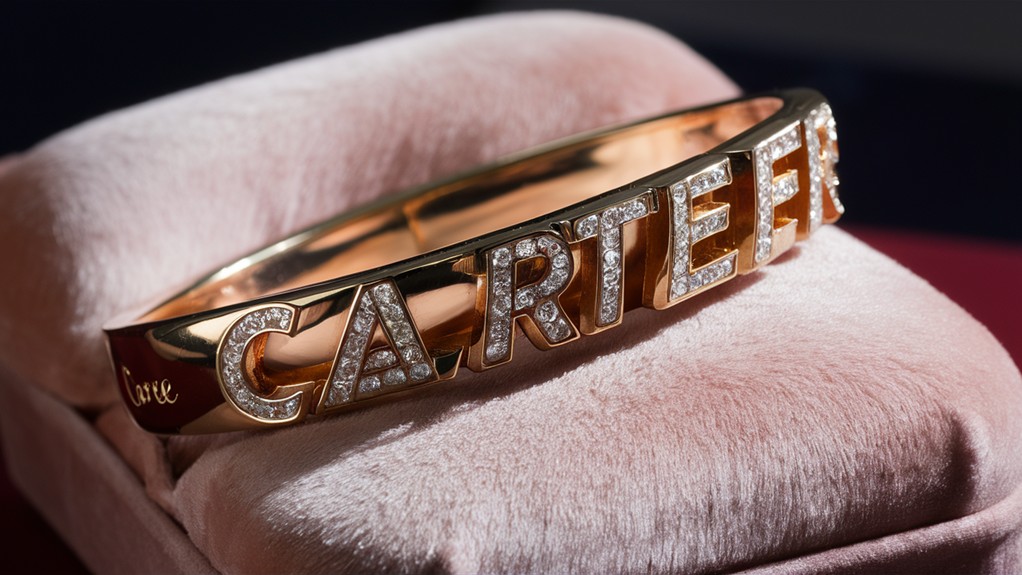Searching for the perfect piece of jewelry? Look no further than the showdown between sterling silver and 10k white gold.
These two metals may seem similar, but they have distinct characteristics that set them apart. White gold boasts durability, withstanding the test of time and daily wear. Meanwhile, sterling silver shines with its soft elegance, perfect for occasional accent pieces.
Tarnish resistance is another factor to consider, as white gold's rhodium plating keeps it gleaming, while silver requires more care.
Cost-wise, white gold falls in the middle, pricier than silver but less so than higher karat gold options.
Ultimately, your choice depends on personal preference, budget, and how often you plan to don your dazzling new accessory.
Our Highlighted Points
- 10k white gold is more durable and resistant to scratches compared to sterling silver.
- Sterling silver requires frequent maintenance to prevent tarnish and retain its shine, while 10k white gold's rhodium plating provides extra protection against tarnishing.
- Sterling silver is generally more affordable than white gold, but white gold's durability makes it a valuable long-term investment.
- White gold has a bright and sophisticated shine, often used for rings and earrings, and requires less maintenance compared to sterling silver.
Durability Comparison
When comparing the durability of sterling silver and 10k white gold, consider the level of resistance to scratches and shape retention.
10k white gold is a durable metal that can withstand everyday wear and tear. It's tougher than sterling silver, making it less prone to scratches and maintaining its shape well over time.
On the other hand, sterling silver is a softer metal that's more susceptible to damage. It can easily bend and lose its shape with accidental bumps and constant wear. Silver vs stainless steel, silver also tarnishes more easily and requires more maintenance to keep it looking its best. On the other hand, stainless steel is a much harder and more durable metal, making it less susceptible to damage and able to maintain its shape and shine over time. When comparing silver vs stainless steel, it ultimately comes down to personal preference and lifestyle factors.
Therefore, when it comes to durability, 10k white gold is the better choice. It offers a higher level of resistance to scratches and provides better shape retention, making it a valuable option for those looking for long-lasting jewelry.
Tarnish Resistance Differences
To understand the tarnish resistance differences between sterling silver and 10k white gold, consider their reaction to environmental elements and maintenance requirements. When it comes to tarnish resistance, there are notable differences between sterling silver and 10k white gold:
- Sterling Silver:
- Tarnishes quickly due to reactions with environmental elements.
- Requires frequent maintenance to prevent tarnish and retain its shine.
- Develops an unattractive yellow or black tint when tarnished.
- Needs refinishing to maintain its like-new condition.
- 10k White Gold:
- Its rhodium plating provides extra protection, making it resistant to tarnishing.
- Maintains its luster longer compared to sterling silver.
- Reveals its yellowish-white color when the rhodium plating wears out.
- Requires recoating to restore its shiny appearance.
Due to its rhodium plating, 10k white gold offers superior tarnish resistance and requires less maintenance compared to sterling silver.
Cost Analysis
Considering the cost differences between sterling silver and 10k white gold, it's important to evaluate the long-term investment each option entails.
While sterling silver is generally more affordable than white gold, it also requires more maintenance to restore its shine, potentially impacting long-term costs.
On the other hand, 10k white gold, being a gold alloy, comes at a higher price due to its composition and the addition of other metals. However, the durability and resistance to scratching make white gold jewelry a better choice for everyday wear, which may be a valuable long-term investment.
Additionally, the white color of white gold adds a touch of elegance and sophistication.
Ultimately, the value goes beyond the initial purchase price, and it's crucial to consider your budget and long-term preferences when deciding between sterling silver and 10k white gold.
Shine and Appearance Contrast
Now let's delve into the shine and appearance contrast between sterling silver and 10k white gold.
- Sterling Silver
- Sterling silver jewelry showcases a lustrous shine that catches the eye.
- Its slightly grey hue adds a unique touch of elegance to bracelets and necklaces.
- White Gold
- White gold, with its bright and sophisticated shine, is often used for rings and earrings.
- Its rhodium plating ensures that the shine lasts longer, maintaining its pristine appearance.
When comparing silver vs gold, it's important to note that both metals can be polished to restore their shine. However, white gold requires less maintenance due to its alloy composition and rhodium plating. On the other hand, sterling silver may need more frequent refinishing to keep its shine intact.
Ultimately, the choice between silver and white gold jewelry depends on personal preference and the desired aesthetic. Both precious metals offer their own unique shine and appearance, allowing you to express your style in different ways.
Care and Maintenance Tips
Take care of your sterling silver or 10k white gold jewelry by following these maintenance tips.
Both sterling silver and 10k white gold jewelry require regular cleaning and care to maintain their shine and appearance. However, there are some differences in how you should clean and care for them.
For sterling silver jewelry, clean it with a mixture of baking soda and white distilled vinegar. Create a paste by mixing one tablespoon of baking soda with half a cup of white distilled vinegar. Gently scrub your sterling silver jewelry with the paste using a soft toothbrush, then rinse it with warm water and dry it with a soft cloth.
On the other hand, 10k white gold jewelry needs to be cleaned with a mixture of warm water and gentle dish soap. Soak your white gold jewelry in the soapy water for a few minutes, then use a soft cloth or a soft brush to gently clean it. Rinse it with warm water and pat it dry with a soft cloth.
Conclusion
When it comes to choosing between sterling silver and 10k white gold, durability, tarnish resistance, cost, and appearance are key factors to consider.
While white gold is tougher and less likely to tarnish, sterling silver offers a softer and more affordable option.
The contrasting shine and maintenance needs of these metals make them suitable for different occasions and preferences.
Ultimately, the decision boils down to what suits your style, budget, and desired level of maintenance.


